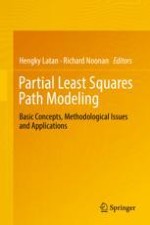2017 | OriginalPaper | Buchkapitel
8. Mediation Analyses in Partial Least Squares Structural Equation Modeling: Guidelines and Empirical Examples
verfasst von : Gabriel Cepeda Carrión, Christian Nitzl, José L. Roldán
Erschienen in: Partial Least Squares Path Modeling
Aktivieren Sie unsere intelligente Suche, um passende Fachinhalte oder Patente zu finden.
Wählen Sie Textabschnitte aus um mit Künstlicher Intelligenz passenden Patente zu finden. powered by
Markieren Sie Textabschnitte, um KI-gestützt weitere passende Inhalte zu finden. powered by
